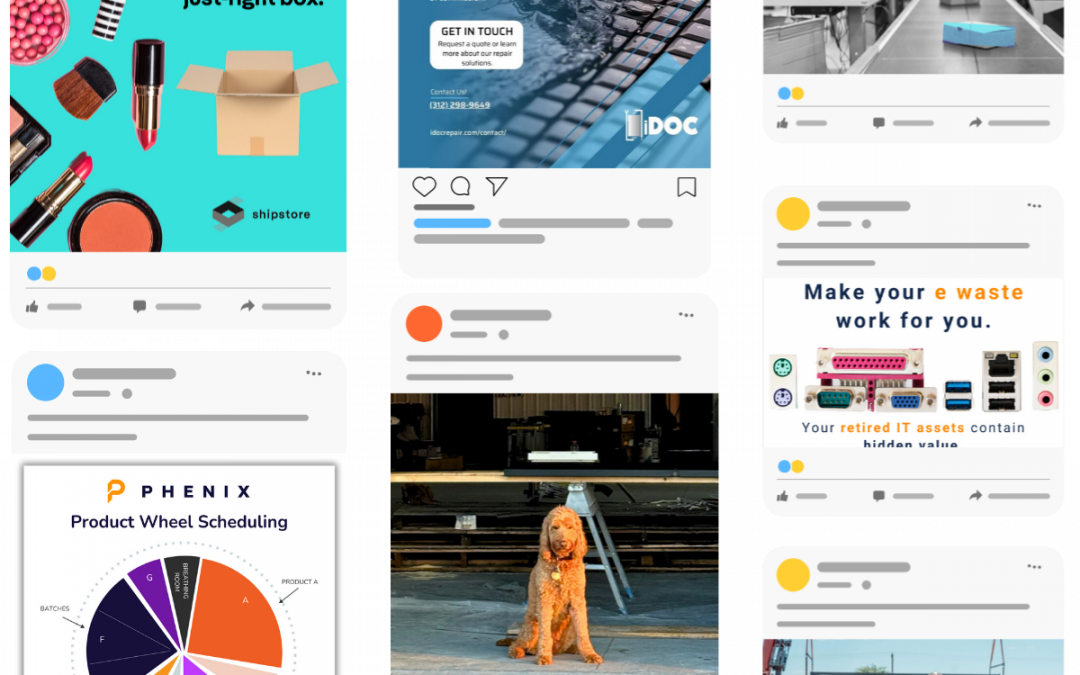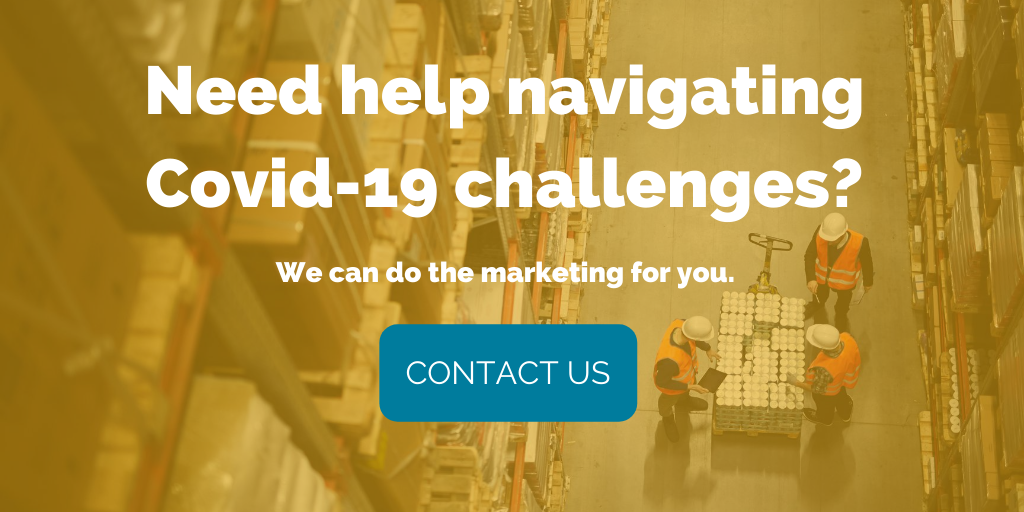

Home
SUPPLY CHAIN MARKETING More leads. More business. Build brand authority and your sales pipeline Grow your supply chain business with a tailored B2B marketing strategy designed by an agency of industry experts. Here's what we do Our services Let’s grow your...
The case for outsourcing content marketing at a time of supply chain disruption
Too busy? Don’t want to invest in-house? Here are 4 prime reasons organizations opt to outsource content marketing.
No other lead generation tactic is more important to technology marketers than content assets. The new Gartner research — trade shows come in second place — shows the importance of paying heavy attention to how your organization positions itself online. If the Covid-19 repercussions left you no choice but to cut back on marketing or if you have been juggling more than ever, consider the case for outsourcing content marketing to stay competitive and excel.
At a time when some of the biggest supply chain trade shows have been either canceled or postponed, count on content assets to grow in significance. Is your organization up to the task?
In our work with both supply chain startups and multi-national corporations, we have noted a few returning reasons for outsourcing content marketing.
Do you recognize yourself or your organization in any of the following?
Outsourcing content marketing: 4 reasons organizations decide to seek outside help
Too much to do
When content marketing is the umpteenth task on an endless to-do list, the results will suffer. This scenario is particularly common among startups where everyone is wearing as many hats as possible in anticipation of the next round of funding. The haphazard approach to what is being published on social channels and on the blog does the company no favors and leaves the person in charge — frequently with limited marketing experience — feeling frustrated. Instead of letting keyword-optimized content carve out a brand niche and build website SEO, the effort goes nowhere although the will to succeed is strong.
The alternative: Partner with a content marketing agency and turn the focus on your core expertise.
No consistency
The effectiveness of content marketing relies on consistency. But being consistent is a major challenge for supply chain companies, especially when trying to recover from months of unprecedented disruption. As we explained in this post, consistency feeds SEO. Let it slip, and you lose in the online search race. In this case, sudden trade show cancelations may have forced the in-house marketing team to a quick pivot, from executing the company marketing strategy to pouring all efforts into making trade show contingency plans. Add a product launch to the mix and chances are content production will come to a standstill.
The alternative: Keep SEO humming and your online presence strong with an outsourced marketing team invested in your success.
Desire to scale but costs are too high
Needs can arise quickly. There may be a trend that a company wants to jump on or a sudden change in the business environment that warrants the need to scale up content marketing quickly. Several of our clients have sought out Fronetics because they lacked certain marketing capabilities and did not necessarily want or have the resources to make the investment in-house. That is particularly true under current circumstances when some organizations are battling budget constraints and disruption. If an organization wants to capitalize on video marketing, for instance, it can be both time-consuming and costly to train team members or go through a rigorous hiring process.
The alternative: Leverage a team out outsourced content experts to fill the gap without adding fixed costs.
Lack of analysis
The motions of content marketing are repetitive — researching, strategizing, executing, analyzing, revising — but they are so for a reason. Even the most well-intentioned content strategy can fail when an organization does not act on analytics. But for busy organizations, it is not uncommon for those last pieces of the puzzle — analyzing and revising — to be left undone.
What types of content worked well this quarter? How did the email messaging fare? What was the click-through-rate? During the past few months, when disruption ruled, it is hardly surprising if not every step was optimally performed. Yet, it can all the same be damaging to the overall success of the marketing effort if the metrics are allowed to go unnoticed for too long.
The alternative: Let content count with an outsourced marketing team that constantly needs to prove ROI.
Considering the significance of content assets, it pays to do it well. Is outsourcing content marketing right for you?
Read more:

Cancellations call for trade show contingency plans (It’s urgent)
With a main lead-generating source canceled or postponed, trade show contingency plans take on increased importance.
The Supply Chain USA 2020 summit in Chicago is a flagship event. Considered a must-attend gathering for strategic decision-making, it draws 1,000 supply chain and logistics leaders for three “unmissable days.”
For executives like Tom Schmitt, chairman and CEO of Forward Air Corp., it is the type of event that generates so many “relevant conversations” that he says it is like getting the value of nine business trips for the price of one.
This year, though, those who planned to head to Supply Chain USA, June 16-18, will need to start working on their trade show contingency plans. The fallout of the coronavirus pandemic has forced EFT, the organizer, to postpone and a new date has yet to be determined.
And — as you have likely experienced yourself — the summit attendees are hardly alone. Within weeks of the Covid-19 outbreak, 1 million people saw their corporate event plans scuttled. MODEX in Atlanta, Ga., in early March, turned out to be one of the last hurrahs for supply chain professionals — half of the pre-registered attendants were no-shows — before cancellations and postponements turned the supply chain conference circuit on its head.
Now, supply chain pros wonder, “What’s next?”
Covid-19 forces domino of cancellations, postponements
A look at this list gives you an idea of the impact: (Check event websites for the latest info)
[table id=2 /]
Trade show contingency plans need to fill big lead generation gap
For supply chain and logistics companies, the cancellations and uncertainty surrounding the postponed shows are no small matters. Trade shows are one of the largest lead generators for B2B demand generation.
Technology and service providers spend an average of 11% of the marketing programs budget on third-party tradeshows, according to the Gartner 2019 Tech Marketing Benchmarks Survey. And the investment seems to be paying off, as 18% of the same companies rank events as the best-performing calls-to-action of marketing-qualified leads, second only to content assets.
Another survey, by MarketingCharts, found software and technology companies cite events as the most effective demand-generation tactic for attracting top-of-the-funnel qualified leads.
In other words, the need to develop trade show contingency plans is quite urgent.
Trend watch: What some companies are doing
So, what actions have some of your peers taken to date to make up for the loss of face-to-face networking?
Some trends are emerging, including:
E-learning: To ensure business continuity while adhering to stay-at-home policies, DC Velocity notes e-learning has taken on increased significance. The establishment of interactive online courses allows companies to conduct specialist training sessions on complex topics that attendees can complete at their own pace. (E-learning is usually a time-consuming and fairly costly endeavor but can serve its purpose when the audience already has an invested interest in the company. For quick engagement, we recommend webinars.)
Dropped subscription fees: On-premise platforms that run on business servers are not conducive to remote work — and vendors of cloud-based supply chain software have seized the market opening. For the sake of lead generation, a range of companies have dropped subscription fees, offering free access to products like transportation management, route optimization, last-mile visibility, and remote robotic operations. One example: InMotion Global, Inc., has made its cloud-based platform, AscendTMS, available at no cost to any company needing help for 30 days.
Quick actions matter
The fact more people are spending more time than usual on their computers provide an opening for companies that can leverage trade show contingency plans. Gartner, for one, advises teams must be prepared to quickly pivot marketing strategy and build campaigns to address this shift.
Immediately after a cancellation or postponement, actions may include:
- Replace all scheduled event meetings with online meetings within 24 hours.
- Create a webinar series that homes in on the key messages you had planned to convey.
- Develop a series of video posts for the company blog that leverage the materials you prepared for speaking sessions and in-booth presentations.
- Promote all content on social media (Video content generates better engagement).
- Combine paid advertising and account-based marketing to target potential buyers.
- Inquire whether there are any opportunities to use the digital channels of the show host for promotions.
Stay relevant — at a distance
Although it may feel like unchartered territory, you really can have relevant conversations online. Base your opening statement on a trade show contingency plan.

Facebook Announces New Business Tool, Twitter Tests Topics Shortcut, and More Social Media News for October 2019
Also, this month in social media news: a court rules LinkedIn cannot stop third-party scraping public information and Facebook expands “Today In” section.
After a relatively quiet month in the world of social media news, social platforms have been hard at work making changes to provide a better user experience and cut down on spam accounts. This is good news for B2B marketers looking to stand out amongst all the competition.
With the growing influence of social networks, social channels have been challenged with making sure the information shared on their sites is authentic and “real” news. In response, social platforms have been working to sort through fake accounts and streamline ways to detect and remove these accounts, which often result in major losses of followers.
But this decline in user accounts does not mean that social media platforms’ influence is declining. In fact, social media usage is at an all-time high, and networks are pushing out new updates, features and policies to keep users happy.
Here’s your social media news for October 2019.
Facebooks announces new business tool for Messenger
Looking to increase leads and engage with new audiences? Facebook is trying to help. The social network introduced a new package of tools for the 40 million active businesses on Messenger, including booking appointments and lead generation workflows. As the new features were announced, Facebook also reported the Discovery tab will be phased out. According to Facebook, “Businesses engaging with potential leads in their preferred channel are seeing results, and finding it easy to continue the conversation and seamlessly nurture leads in Messenger.”
Twitter tests new ‘topics’ shortcut
Twitter users may soon be able to follow topics in the same way they would follow users. Users can see tweets about topics they choose (like digital marketing, supply chain procurement, or even sports) in the home feed. Individual tweets will be monitored through machine learning and chosen to be included in specific topics.
Though only in the testing phase, the new shortcut would help users discover the exact content they need and want without following a specific account. The Verge reports that Twitter is also working on other ways to improve the user experience, including searchable direct messages, the ability to re-order the photos in a tweet after you have attached them to a new post, and plans to add support for Apple’s Live Photos.
Court rules that LinkedIn cannot stop third-party data scraping of public information
hiQabs has been collecting public user information on LinkedIn to create analytics for employers that accurately identify employee patterns and help with retention efforts. But LinkedIn has tried to block the “data scrapping,” alleging that hiQ was violating the CFAA, as well as the Digital Millennium Copyright Act (DMCA).
Until now, when a San Francisco appeal’s court told LinkedIn to take a step back. The court’s decision means the CFAA doesn’t apply to public information, including information collecting via social media platforms. This decision could have major implications for social platforms looking to protect user privacy. We’ll continue to closely monitor any updates from this case in next month’s social media news.
Facebook expands “Today In” section
“Today In” has been running in six U.S. cities since January 2018, and has over 1.6 million people who have opted to receive regular local updates from Today In within the newsfeed. Facebook just announced they’ll be expanding the news section to 6,000 more U.S. cities and towns, bringing local news to “news deserts,” areas with limited local news available.
“Today In” showcases the biggest news stories and happenings in local regions. With declining engagement rates, Facebook created the separate newsfeed in an effort to boost engagement and discussions around topics that matter to local areas.
Facebook clarifies privacy settings for Groups
Public, closed, or secret? What do these privacy settings mean? Users across Facebook’s platform weren’t sure, so the network has changed the wording describing the privacy settings for groups. To make these settings clearer, groups now have the option of public or private. Facebook writes:
“We’re making this change because we’ve heard from people that they want more clarity about the privacy settings for their groups. Having two privacy settings — public and private — will help make it clearer about who can find the group and see the members and posts that are part of it. We’ve also heard that most people prefer to use the terms “public” and “private” to describe the privacy settings of groups they belong to. “
The changes leave privacy settings more straight-forward. Public groups show anyone who is a member and all the content shared within the group, while private groups will only show members and content to users that join the group.
Related posts:
- Facebook Updates Stories, LinkedIn Adds New Audience Insights, and More Social Media News for August 2019
- Fed Chief Halts Facebook’s Libra Project, Digital Marketing Growth Statistics Released, and More Social Media News for July 2019
- Facebook Changes Business Pages, LinkedIn Acquires Drawbridge, and More Social Media News for June 2019

